#uttara ashadha nakshatra
Explore tagged Tumblr posts
Text
SZA

♎︎ Vishakha Sun (atmakaraka) in conjunction Mercury + Swati Mars in the 10H
♒︎ Purva Bhadrapada Moon in the 2H
♑︎ Uttara Ashadha ASC + Dhanistha Rahu in the 1H
♐︎ Purva Ashadha Saturn (lagnesha) and Mula Venus in the 12H
♊︎ Ardra Jupiter (Rx) in the 6H (in opposition with Saturn)
♋︎ Ashlesha Ketu in the 7H
#vedic astrology#atmakaraka#nakshatras#lagnesha#sza#vishakha sun#libra sun#sun atmakaraka#sun in the 10th house#mercury in the 10th house#mars in the 10th house#swati nakshatra#moon in the 2th house#purva bhadrapada moon#aquarius moon#rahu in the 1th house#uttara ashadha nakshatra#capricorn rising#dhanistha nakshatra#ketu in the 7th house#saturn in the 12th house#venus in the 12th house#mula nakshatra#purva ashadha#jupiter in the 6th house#ardra nakshatra#aquarius#libra#capricorn#ashlesha nakshatra
54 notes
·
View notes
Text
Uttara Ashadha - The Great Victory

Degrees: 26°40 Sagittarius to 10°00 Capricorn Deities: The 10 Vishvadevas, the universal Gods. Vimshottari Lord: Sun Sounds: भे bhe, भो bho, जा ja, जी ji The core meaning: no goal is too big for you. You win all your battles thanks to your well-elaborated strategies and boldness. You achieve anything on your own: you need no one. Enemies are many but you end up defeating them. You might dream about changing the world and you can do your part successfully. You take pride in it and you show it. Defending a cause is your ultimate mission in life and it will make you thrive. So, do not ignore your spiritual ambitions and the rest of the world. Show what you are capable of. Qualities: fierce, competitive, bold, outgoing, ambitious, persevering, fearless, leadership skills, optimistic. Affliction: conformist, blunt, anxious, stubborn, selfish, greedy, resentful, self indulgent. Interest in politics, justice, writing, traditions.
#astrology#vedic astrology#jyotish#nakshatras#sidereal astrology#astro#degree#degrees#astro community#astro notes#uttara ashadha#uttara ashadha nakshatra#sagittarius#capricorn#uttara ashadha ascendant#uttara ashadha rising#uttara ashadha sun#uttara ashadha moon#uttara ashadha ak#uttara ashadha atmakaraka#uttara ashadha first lord
97 notes
·
View notes
Text
Those with placements in Uttara Ashadha Nakshatra are individuals who do not align themselves with any specific large religious movements. Instead, they believe in a singular god or force that unites all beings in the universe. This belief drives them to explore and study how the gods and deities of various religions connect and intertwine with one another. With a deep sense of curiosity and open-mindedness, Uttara Ashadha natives maintain a unique perspective on spirituality, rooted in the idea of a universal, unifying power.
More posts on Uttara Ashadha Nakshatra
Nakshatra Notes Masterpost (Link collection of all 27 Nakshatras)
#astrology#uttara ashadha#nakshatra#sagittarius#capricorn#uttara ashadha nakshatra#vedic astrology#astrology observations#vedic notes#astrology blog#vedic astro notes#vedic astro observations#astro notes#vedic astrology observations#astro community#astro posts#astro observations#astro blog#astrology tumblr#tumblr astrology#birth nakshatras#astrology placements#nakshatras#PositiveUttaraAshadhaCOC
32 notes
·
View notes
Text
Guru Purnima 2024: Embracing Wisdom and Spiritual Growth
As we approach the full moon on July 21, 2024, a powerful and transformative point in the lunar cycle awaits. Guru Purnima, under Uttara Ashadha nakshatra, encourages honoring spiritual guides and embracing wisdom. Much love! ~ Michelle
As we approach the full moon on July 21, 2024, at 4:17 AM MST, we find ourselves at a powerful and transformative point in the lunar cycle. This Guru Purnima, occurring under the auspices of the Uttara Ashadha nakshatra, brings a unique opportunity to honor our spiritual guides and embrace the light of wisdom and understanding. The Waxing Moon and Purnima Tithi The moon is currently waxing,…
#Eastern Astrology Sidereal Astrology#Guru Purnima#Intense full moon#Michelle Berry#Michelle Berry Bliss#Spiritual Growth#Universal Star#Uttara Ashadha Nakshatra#Vedic Astrology
2 notes
·
View notes
Text
2 notes
·
View notes
Text

————
I LOVE this take bc its the story of my life along with other sun nak women I know. You even see this sort of “sun nak women are strong they dont need help” bs spread on twt OR it’s obvious to a few, that people tend to help us less.
Sun nak women tend to keep their emotions close to their heart, as we are used to people trying to manipulate them. However with that comes the assumption that we are always, cooling and balanced people. When in reality, internally, theres a lot going on. People want these women to constantly pretend to be okay and be the ‘cool girl’ and as soon as we break that perception(bc were people too💀) all hell breaks loose.
It’s this strange dichotomy of people assuming they know us, and constantly getting proven wrong. Speaking from experience, UA women tend to attract all kinds of people that want to be you, or be with you. No one seems to understand the weight of folding yourself up and pretending to be something you’re not. For a lot of sun nak women, people treating you this way will change, and you will see a difference in your circle when you’re unapologetically, confident and emotional. Be true to yourself, and watch how people deserving of your light come into your life.
Side note:
This is also why you see when sun nak women are true to themselves. In their relationships, platonic or not these women are very soft and sweet. The sun is not just harsh but also a warming light.
the beauty of uttara ashadha 🌞🐘:

🐘 naomi campbell: uttara ashadha lagna
*MAJOR TW// i discuss a lot of potentially triggering topics, i.e. abuse and racism. some of the uttara ashadha natives i exhibit and talk about are known for their terrible behavior and scandals. i do not condone their offensive and ignorant behavior. they are simply being shown to solidify my opinions on the nature of this nakshatra*
as you read this post, please listen to this uttara ashadha playlist i made for the full experience: https://open.spotify.com/playlist/207xxveKWd1TlN12Sr5GAW?si=G5F-Hd3_SHui2PYViP8hkQ
🌞 in the krittika nakshatra, we saw the fiery combination of kuja’s rashi and surya’s vimshottari rulership. krittika represents the cosmic fire of purification, as kuja is the planet of leadership, chandra is the planet denoting our mental state, and surya is the embodiment of the true yang path. in the uttara phalguni nakshatra, we saw the giving and serving nature of surya shine through the solar embodiment of aryaman and the leo rashi. buddha bestowed this nakshstra with the ability to sense areas of need within others and find the best ways to solve others’ issues and realign them with their dharma path. in uttara ashadha, we see these natives embody the cosmic fire we once witnessed in krittika and eventually learn to master the importance of finding yourself in your soul. as compared to looking to the accomplishments you have helped others succeed in for personal reaffirmation (a problem uttara phalguni natives struggle with). uttara ashadha’s ruling deities will serve as their cosmic guides through these deeply purifying solar states.
🌌 the deities of uttara ashadha are the ten vishvadevas, the ten universal gods. in sanskrit, vishvadevas translates to “all-knowing or omniscient”. these ten gods represent the evolution of uttara ashadha natives’ lives: vasu (meaning brilliance or wealth-giver), satya (being truthful in one's thought, speech, and action), kratu (strength and willpower), daksha (rituals and people), kala (time and death), kama (cosmic desire and creative impulse), dhriti (steadiness and retention), kuru (ancestors), pururavas (abundance, surya, brightness), and madravas (zenith of joy). let’s take a closer look at a few of these deities to examine the path of uttara ashadhas.
✨ satya, loosely translating to "truth/essence", is equated with and considered necessary to the concept of rta. rta means order, rule, and truth. rta is the principle of natural order which regulates and binds the collective universe and all of it’s inhabitants. in the hymns of the vedas, rta is said to be what is ultimately responsible for the proper functioning of the natural, moral, and sacrificial union of life. due to this, rta is said to uphold dharma. satya gives birth to the possibility of rta, due to satya’s regulatory and binding nature. truth (satya) is considered to be essential and without it the universe and reality falls apart and, therefore, can longer function. this is why satya is also considered to be our essence, the core of our being. truth is considered to be a form of alignment with the divine. the whole foundation of christianity, and most prominent religions, stress abiding in your cosmic truth. in the book of james 1:18, it reads “of his own will he brought us forth by the word of truth, that we should be a kind of firstfruits of his creatures.”. when we welcome the essence of satya, we flourish in internal beauty and the truth blooms and beams on our physical surface.
👠 this internal radiance of satya is the reason the solar nakshstras, primarily uttara ashadha, are one of the top placements for prominent models like victoria’s secret angels. such as, stella maxwell (krittika surya and uttara ashadha chandra), behati prinsloo (krittika surya and uttara phalguni chandra), chanel iman (krittika chandra), doutzen kroes (uttara ashadha surya), marth hunt (uttara ashadha chandra), josephine skriver (uttara ashadha chandra), karolina kurkova (uttara ashadha chandra), jac jagaciak (uttara ashadha surya), erin heatherton (uttara ashadha chandra), etc.. solar beauty radiates like the sun illuminating drops of midnight dew on crisp greenery or radiating and reflecting the vast sky on to the indigo crests of waves. solar beauty is a beauty that often goes unnoticed for a long time, only to be rediscovered for it’s rich depths. it is like when one is too focused on looking downward at the earth’s greenery and ocean, only to forget the beautiful light that illuminates these beautiful forms of nature. solar beauty radiates and encompasses the native as a whole. it gleams and shines like the bright surya. this is why we see uttara ashadha natives brimming with warm and olive undertones, freckles or beauty marks, and shiny hair. they embody the cosmic youth and the truth that nourishes “the firstfruits of creatures”. this is why solar women are so aesthetically pleasing to the eye, as they cause sensory overload, modeling the act of one’s eyes hurting from looking at the sun for too long.
👁 according to the rigveda, the antithesis of rta and surya are anrita and asatya, meaning falsehood. falsehood is considered to be a form of misconduct. satya includes factuality, reality, truth and reverence. satya is our past, current and future. it is considered to be the functioning of our world. the falsehood of anrita and asatya are reflected in surya’s association with the right eye. in the christian religion, the right eye signifies the evil from which is falsity and the left eye is the falsity through which is evil. in zechariah 11:17, it states “woe to the worthless shepherd that deserteth the flock! the sword shall be upon his arm, and upon his right eye; his arm withering shall wither, and his right eye darkening shall be darkened”. in this scripture, the arm is said to denote the power of truth applied to confirm evil (satya). the right eye symbolizes the memory and knowledge of good applied to confirm falsity. the shepherd represents one who teaches truths, leading others along the path of dharma. in matthew 5:29-30, jesus spoke, “if thy right eye hath caused thee to stumble, pluck it out, and cast it from thee. and if thy right hand hath caused thee to stumble, cut it off, and cast it from thee; it is better for thee that one of thy members should perish, and not thy whole body be cast into gehenna”. surya’s rulership of the right eye is why uttara ashadha natives frequently struggle with eye issues. because of this, uttara ashadha natives usually wear glasses or contacts and become associated with/profit off of their glasses. for example, george clooney (uttara ashadha chandra) has several articles written about his persol glasses. cary grant’s (uttara ashadha surya and chandra) estate collaborated with the brand “olivers people” to create a line of successful eyewear. the sunglasses grant wore in the 1959 hollywood classic north by northwest is characterized as a sunglasses design that is the epitome of classic style. dave bautista (uttara ashadha surya and chandra) once said he often wears sunglasses because it helps him to cope with his social anxiety disorder. bautista once said, “i would rather wear sunglasses than stand on the red carpet.”. actors like zooey deschanel (uttara ashadha surya, chandra and lagna) and jane levy (uttara ashadha chandra) are known for playing roles that involve their characters wearing glasses. many articles have been written about zooey deschanel’s glasses on the television show “new girl” and jane levy’s glasses on the sitcom “suburgatory”. glasses act as a sharpening tool that allows to better see our environment, our truth. glasses reflect our surroundings onto the eyes of those who look through the pair of sunglasses on another person. they serve as objects cycling the truth of the wearer and beholder, in a way, it rejects the falsity of illusion and completely embraces realignment with truth, while serving as a protective medium between the native and others. believing that we have the lenses of reality within each of us. what you see is what you get or what you see is what you are, as far as eternity is concerned, abiding in satya. it is believed that our beliefs are the lenses through which one sees the world. what one believes determines your focus (kratu) and in turn your actions. one sees things as they believe they are, not as things really are, but rather as one is. if one’s beliefs are based on truth, your figurative glasses will allow you to see eternity from the rta/satya perspective. however, if your belief lenses are made from anrita and asatya, you will see illusions and falsehood reflective of the state of your soul.
☀️ there is a particular effect called photo-bleaching. photo-bleaching happens to the cells in your retina in the back of your eye. these cells are called rods and cones, and these cells are full of light sensitive pigments. light comes in the form of particles, called photons, in your eye; these stimulate the cells by changing this light sensitive pigment, which is called retinal, into a different form and they stimulate the cells to send electrical impulses to your brain. if you look at the sun for a long period of time, this sends the cells into overdrive and it takes them time to calm down. after you finish looking at the sun and you look at a normal level of light, like a plant, you get black spots where you've been looking at light where the cells have been over stimulated. this is the essence of solar beauty. it leaves a lasting impact on the eyes of others and it is hard to forget their presence. their warmth lingers, stays, and satiates others like the deity kama.

🐘 kate moss: uttara ashadha surya
🐾 uttara ashadha’s yoni is the male mongoose. the male mongoose are sometimes solitary, but most live in colonies. the average colony is made up of roughly twenty mongooses. those who live in these colonies will take turns being sentinels. sentinels stand on their hind legs on higher ground, looking all around them for danger. if they spot a potential threat, they will let out a loud scream that acts as an alarm call that lets the rest of the colony members know they should retreat to safety. when operating in their light state, uttara ashadhas act as the male mongoose by being the sentinel of their surroundings. they act as a guide to those around them and try to ensure the safety of others. they stand tall like the symbolic mongoose, mirroring the phallic force, and usher those into the light of achievement. this is why we see so many uttara ashadha natives appear in musical groups, as they are the glue that binds their surroundings together. but this intense binding begins to darken, it is often people will become obsessed with their great achievements and warmth and try to bring the native down with jealousy and harm. zayn malik (uttara ashadha) was known to be a part of a popular musical group, “one direction” and reportedly left the group in 2015, due to him feeling left out by the group and not liking the music they created. jennie (uttara ashadha surya) from “blackpink” was the main rapper of the group and was the first one to debut a solo single. nicki minaj (uttara ashadha lagna) was once apart of the popular rap group “young money”, but decided to further pursue her career as a solo artist. baby spice (uttara ashadha surya) was in the famous 90s girl group “spice girls”. a common theme amongst these natives is maintaining peace and upholding an image. uttara ashadhas are determined to succeed at any cost and many individuals subconsciously sense this and abuse their power. they view uttara ashadha as a never-ending vessel of determination and willpower and abuse this by treating these natives poorly, as they know the native will do anything to maintain peace for prosperity.
🐢 this foundation of determination and willpower is correlated to the auspicious elephant. the elephant itself is quite common in most religious traditions and mythologies. elephants are widely considered to be a positive omen and are sometimes revered as deities, symbolizing strength and wisdom. there is an ancient hindu belief of “world elephants”. the amarakosha states the names of eight male elephants who bare the world (in addition to eight unnamed female elephants). the names of the male elephants are airavata, pundarika, vamana, kumunda, anjana, pushpa-danta, sarva-bhauma, and supratika. there are four elephants that are believed to support the earth from the four different directions. in the ramayana, they are listed as the viroopaaksha (supporting the east), mahaapadma (supporting the south), saumanasa (supporting the west), and bhadra (supporting the north). while the knowledge on this subject is very limited, chukwa, the tortoise, is said to support the elephant mahaapadma which in turn supports the world. chukwa’s tortoise translation is not set in stone and can also be interpreted as a water snake (rahu), denoting the foundation of earthly desires is rahu. chukwa (rahu, earthly foundation/desires) cannot exist without mahaapadma (ketu, spiritual liberation), as a head may not exist without a body. it was once said: “on the wondrous dais rose a throne, and he its pedestal whose lotus hood with ominous beauty crowns his horrible sleek folds, great mahapudma; high displayed he bears the throne of death. there sat supreme with those compassionate and lethal eyes, who many names, who many natures holds; yama, the strong pure hades sad and subtle, dharma, who keeps the laws of old untouched.”.
🐘 wisdom is said to be represented by the elephant in the form of lord ganesha, one of the most popular gods in hindu mythology. lord ganesha is said to have the head of an elephant which was put on after the human head was either cut off or burned. lord ganesha is associated with new beginnings, success, and the removing of obstacles (as the act of removing one’s head is symbolic of removing rahu, essentially one’s desires). lord ganesha is said to be the deity of ketu, due to ketu being the moksha karaka and our source of liberation. ketu is said to bestow immense knowledge, spirituality, and luxury, when properly placed. if a native has an inauspiciously placed ketu in their natal chart, it is said praying to lord ganesha may aid the native. the smoky and prosperous nature of ganesha is exhibited in many rituals involving the symbolism of the elephant, in particular, the cameroonian practice of the bamiléké tribesmen. the bamiléké are often known for their intricately beaded masquerades, including the impressive elephant mask.
🎭 masquerades are considered to be a very integral part of the bamiléké culture. these masquerades take place during special events such as funerals, palace festivals, and other royal ceremonies. the masks are performed by men and aim to support and enforce royal authority (assuming the natural masculine leadership and dictation of surya). the power of the bamiléké king, the fon, is primarily represented by the elephant. the fon may transform into either an elephant or leopard whenever he chooses. their elephant mask, called a “mbap mtengis” a mask, has protruding circular ears, a human like face, decorative panels on the front and back that hang down to the knees and are covered in deeply intricate, geometric beadwork including much triangular imagery (symbolic of the solar force that is the triangular-like formation of an elephant’s large ears and protruding trunk, mirroring the phallic pyramid). occasionally, the fon may allow members of the community to perform with an elephant mask along with a leopard skin, conveying wealth, status and power by shielding one’s face. this act of covering one’s face is symbolic of sacrificing one’s identity (rahu) for the purpose of attaining moksha karaka (ketu). by the bamiléké fons covering their face with an elephant mask, they bring an association and representation of power, strength and prosperity (lord ganesha).
🌟 this sacrifice of self association and identity and the smoky nature of the bamiléké tribe represents the nature of uttara ashadha. it is often wondered why uttara ashadhas have such a dark and vampiric aesthetic, as this is the nature of sacrificing one’s identity. the spiritually devoting nature of these natives causes a detachment from their identity to embrace their higher power. beyoncé (an uttara ashadha ketu native) was once famous for her shiny, flashy, and glamorous y2k aesthetic. in the recent years, we have seen beyoncé move towards a less flashy, but equally captivating and prosperous, lifestyle. in a way, she sacrificed her y2k/flashy identity and received more prosperity and healing in return. in her latest visual album “black is king”, we saw her collaborate with numerous placements of uttara ashadha, such as wizkid (uttara ashadha shani atmakaraka) and jessie reyez (uttara ashadha rahu), to illustrate the importance of coming back to your familial routes and finding identity within your ancestors (it is important to note, out of my survey of fifty contributors and artists on the album, uttara ashadha was by far the most prominent atmakaraka placement). in this visual album, we see numerous african masks that call to mind the smoky, spiritual nature of ketu and the self-sacrificing and giving qualities of surya in his highest state (uttara ashadha).
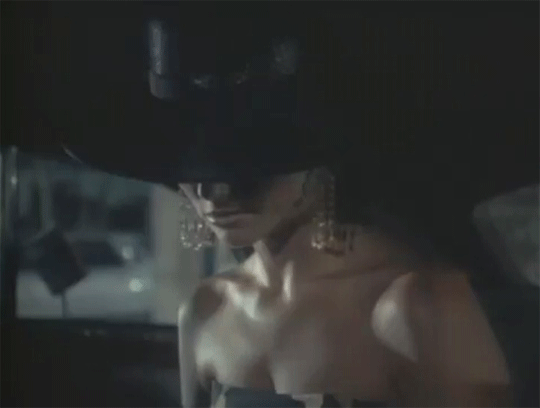
🐘 christie brinkley: uttara ashadha chandra
🥘 the mahavidya associated with surya is matangi. she is the tantric goddess known for her wisdom, knowledge, and bestowing power. according to the shaktisamgama-tantra, the birth of ucchishta-matangini is as follows: the god vishnu and his wife lakshmi visited shiva and his second wife parvati and gave them a banquet of fine foods. while eating the banquet, the deities dropped some food on the ground, from which created a beautiful maiden who asked for their leftovers. vishnu, lakshmi, shiva, and parvati granted the maiden their left over food as prasad (meaning food made sacred by having been first consumed by a deity). this act can be interpreted as the ucchishta of the deity, it is important to note that due to the negative connotation the word ucchishta, it is never explicitly used in connection to prasad. shiva then stated that those who repeat mantangi’s mantra and worship her will have their material desires satisfied and gain control over foes, declaring her the giver of boons. from that day on, the maiden was referred to as ucchishta-matangini. because of matangi’s humble origin, she is often described as an outcast and impure. she is often associated with pollution, due to her relation to outcast communities. the humble mantangi is regarded as a tantric form of the goddess saraswati, the goddess of knowledge and the arts of mainstream hinduism. matangi and saraswati share many traits in that regard. both goddesses embody music and are depicted playing the veena. both are said to be the nada (sound or energy) that flows through the nadi channels in the body through which prana flows. these goddesses are related to rain clouds, thunder, and rivers. by both governing learning and speech, saraswati embodies the orthodox knowledge of the brahmins, whereas matangi, the humble, wild, and ecstatic outcast, embodies the knowledge within that transcends the boundaries of mainstream society (hence, her associations with social pariahs).
🏆 whereas, uttara ashadha (उत्तराषाढ़ा) comes from the sanskrit words उत्तर (latter) and अषाढ (invincible). the meanings of uttara ashadha are said to be “the latter invincible one”, “latter victory”, or “the latter undefeated”. the term “latter” is derived from the latin word lætra, meaning slow or deliberate, this juxtaposition with invincibility, denotes resilience, power, and prosperity. the journey of uttara ashadhas are said to bevslow and lengthy (lætra), but in then end, they reach true success by embodying the humility and skillfulness of matangi. this correlates to uttara ashadha being the top placements for athletes, as the practice of exercising and bodily discipline requires a deep understanding of prana, the source of life (matangi). athletes must be able to control their breathing and abide in a clean environment to maintain proper focus and health. this is why prana is said to permeate reality on all levels, aligning our inner selves with the cosmic truth (surya/rta). indian philosophy describes prana as flowing in the nadis throughout the body. the number of nadis varies according to different texts and philosophies, but the three principal nadis run from the base of the spine to the head (areas traditionally associated with surya and the vimshottari-ruled surya nakshatras). they are the ida on the left, the sushumna in the center, and the pingala on the right. the nadis are said to play a role in many yogic practices, like shatkarmas, mudras, and pranayama. these practices are intended to open and unblock the nadis to allow life force to be abundant within all of us. the ultimate aim of some yogic practices are to direct prana into the sushumna nadi, enabling the kundalini to rise, and thus bring about moksha karaka, our liberation. in both the subtle and the causal body, the nadis are channels for our cosmic, vital, seminal, mental, and intellectual energies (our prana). this is why they are considered to be important for sensations, consciousness and the spiritual aura.
🥇 ida is traditionally associated with lunar energy. the word ida means "comfort" in sanskrit. ida possesses a moonlike nature and a distinct feminine energy with a cooling/yin effect. whereas, pingala is associated with solar energy. the word pingala means "orange" or "tawny" in sanskrit. pingala possesses a sunlike nature and masculine energy. pingala is warm/yang and courses throughout the right side of the body, whereas ida courses through the left side of the body. these nadis are often representative of the two hemispheres of the brain. pingala is the extroverted, solar nadi, and corresponds to left hemisphere of the brain. ida is the introverted, lunar nadi, and refers to the right hemisphere of the brain. this is due to the left hemisphere controlling the muscles on the right side of the body and the right hemisphere controlling those on the left, symbolic of the dualism of nature and our bodies. the ida nadi regulates all the mental, lunar processes while the pingala nadi regulates all the vital, solar processes. examples of uttara ashadha athlete natives who learned to balance the inner matangi and nadis within is the famous professional boxer muhammad ali (uttara ashadha surya) who was nicknamed “the greatest”. the olympic athlete marion jones (uttara ashadha chandra) who is a world champion track and field athlete and previous member of the WNBA. we also see a great abundance of athletes specifically having an uttara ashadha surya, such as matthias ginter, malek jaziri, claudio marchisio, tyler breeze, davie selke, pierre webó, and ehsan haddadi. as surya feels at home and comfortable in expressing it’s dualistic nature in this nakshatra. athletes and uttara ashadha natives are said to operate in the pingala mental state, but understand the importance of matangi and the balance of prana. as prana is considered to unite all elements and directions (recall the directional nature of the world elephants) within the body by aligning the ether element within, as how brihaspati and shani are both of the ether/air element and are crucial in reaching balance in our souls.

🐘 sasha pivovarova: uttara ashadha surya and chandra
🔥 uttara ashadha lies in the padas of sagittarius and capricorn. like all the surya-ruled nakshatras, vimshottari-wise, it bridges the nature of the fire element and the earth element. this denotes the karmic association of peak masculinity (fire) and the grounding femininity (earth). the elemental nature of earth represents the body. it is the densest element and creates the most heaviest psychological influence. it represents the practicalness and sensuality of nature, as a mongoose simply intuitively knows when to alert his group of danger or a goat knows which step to climb on a mountain. fire is the focus that lies within us and it corresponds to the digestion of life. fire is said to digest sensory impressions (water) and turn them into purposeful thoughts and ideas. as surya is said to calm the waters of the mind (chandra).
🌬 whereas, the air element correlates to intelligence and the movement within, essentially our prana. this deep level of intellect is why the elemental air/shani/brihaspati signs are seen in politics, as they know how to relate to others and appeal to society. these natives are highly social, conscientious, and understand the principles they abide by, hence their prevalence in politics. the element of ether is not to be confused with the principality of air. like air, ether is associated with conscientious but it is also the state of pure consciousness itself. ether transcends the physical elements (this is why rahu is said to be capable of air, as when rahu in his dark, illusionary state, he cannot transcend). ether is the witnessing of consciousness. it is the ability to perceive the process of intellect (air) and remain unidentified with it. it is our freedom and the closest to our state of satya. it serves as the freedom from the mind and body. it is detachment from our physical state of determination (fire), intellect (air), thoughts (water), and the sensuality of earth to go beyond our physical karma. as the ether knows detachment is the embodiment of true spiritual knowledge. this is why shani is said to both rule the ether element and be the higher state of rahu, as shani understands the power of going without for the purpose of the greater good.
🌳 both sagittarius and capricorn embody the final installment of the earth and fire rashis. sagittarius is the natural ninth house of higher education, wisdom, and spirituality. capricorn is the natural tenth house of power, ambition, and work. these houses are bridged under the leadership and guiding qualities of surya to create a distinct amount of material and mental wealth. this is why we see uttara ashadha natives feel called to work in areas such as politics, law, and economics, due to their spiritual and societal knowledge. the fall of uttara ashadha lies within the elemental composition of this nakshatra. too much fire leads to exaggerated levels of aggression. too much air causes sterility, dryness, and an ungrounded sense of life. too much earth brings stagnation and clinging. for example, george washington (uttara ashadha chandra) was known for his sex scandals, killings, and perpetuation of slavery. pope saint john xxiii (uttara ashadha chandra) was known for bending the rules in order to be ordained as the pope. jeb bush (uttara ashadha chandra) was known to be associated with high class drug dealers and lawsuits. abraham lincoln (uttara ashadha chandra) was known for his disagreement of slavery, despite being quite racist himself. these men operated in the stagnation, sterility, and energetic dullness that lied within their souls. they embraced the corrosive flames of fire and figuratively burned down what they did not respect. corazon aquino (uttara ashadha chandra) was regarded with high respect for combining traditional femininity with politics and her advocation for human rights and restoration of political power to civilians. aquino* (please see my note below) is an example of uttara ashadhas using their fiery determination to bring equality and justice to people, no matter the cost. they relate to the earthly parallels of society and know in order to gain equality, sacrifices of the self must be made. thus, they are the embodiment of yang.
💥 no matter the morals and principles of uttara ashadhas, we see uttara ashadha men being idolized and followed by the collective. the media is entranced by their yang embodiment and their negative behaviors are frequently ignored for the purpose of remaining idolized. consider uttara ashadha natives like russell crowe, bruce willis, george clooney, and matt damon. they have arose to great fame due to films like “die hard” or “ocean’s eleven”, because men idolize their pingala, tough, solitary, and strong exteriors and often try to imitate their actions. men subconsciously acknowledge the cosmic interplay of the masculine shani (capricorn), brihaspati (sagittarius), and surya, as they idolize the solitary state of the uttara ashadha mongoose: the one who has no yoni consort.
🪴 it is important to understand that capricorn itself is not a masculine sign. it is indeed the most feminine sign of the zodiac, due to it embodying the earthly nature of clinging to the tree as leaves do or grounding to the earth as clay. the over-ruler of capricorn, the planet shani, is often considered to be gender-neutral as the ether element itself transcends gender. shani simply molds the earthly, feminine clays of capricorn into greatness and abundance. examine the abundance of uttara ashadha, shravana, and dhanishta (whom all lie in the capricorn rashi). all of these nakshatras are famed for their looks, auras, and wealth.
* the lovely @/sakkurareadnt on twitter has brought to my attention that while aquino was the first president of the philippines to be a woman, she was not the one to solely change the power civilians have. it was the people of the philippines themselves who organized the revolution. aquino did believe in human rights and did well during her presidency, but the restoration of power to the people was primarily due to the movement of the citizens of philippines. i sincerely apologize for any confusion this may have caused 💗

🐘 fka twigs: uttara ashadha surya
☀️ due to surya being the fiery path within, the element fire is said to connects us to the sense of sight. ayurveda states anything we can see is touched by fire, as we abide in the state of solar satya. the element fire is called “tejas” in sanskrit and it is the third of the pancha mahabhutus (the five great elements). it is the third element because it evolves from the states of ether and air, containing the essence of these elements within it. ether energizes fire with the ability to find space to exist within. air bestows fire with the capacity of prana to burn. it is due to the element air, that fire will never be able to still within us. fire is said to represent the capacity for heat and light. it is the generator of energy in the body, modeling the behavior of how surya is the generator of energy for the entire solar system. it is said that fire is the process of liberating energy from its source.
⭐️ the tanmatra of vision, rupa, is the origin of the purifying fires. rupa means to form or color. the forms and colors of life are a direct result from our perception. rupa serves as the tanmatra, our unmanifested form of perception, light, and vision. fire binds with the sense of vision, as fire provides light for perception. the eyes serve as the channel through which light is digested and perception takes place. think of it this way, you cannot see what is ahead of you, if you simply have no light to illuminate your path. with uttara ashadha women specifically, we tend to see this struggle with male attention. women are naturally quite yin, but the peak pingala energy of uttara ashadha alters the manifestation of these natives. people are confused by these natives’ balanced and equalizing energy and flock to their perceived light like moths to a flame. in many cases, people are also insecure about the uttara ashadha native’s inner elemental balance and will choose to leave them. this is because uttara ashadha illuminates everything within their environment, including the vampiric energies of others.
✨ in the show “euphoria”, cassie (played by an uttara ashadha chandra native sydney sweeney), we see this internal dichotomy around male attention. cassie is described as a sweet and popular person, but has difficulty with navigating relationships. she grew up with an emotionally unavailable and irresponsible father who grew to only care for money. men are entranced by her energy and solely view her as a means of sexual pleasure. boys treat her as this shiny jewel, until she rejects or accepts their sexual advances, then she is viewed as promiscuous. the problem here is men become obsessed with uttara ashadha women, as they are obsessed with uttara ashadha men in film. they seek these natives’ fire and become disappointed when they come to find these natives have emotions and needs like any other person.
🌥 the movie “gone girl” is about a former writer and his glamorous wife amy (played by uttara ashadha chandra rosamund pike). they try to present a portrait of a blissful marriage to the public. when amy goes missing on the couple's fifth wedding anniversary, the writer becomes the prime suspect in her disappearance. the police pressure and media frenzy causes the couple's image of a happy union to crumble, leading to tantalizing questions about who they really are. throughout their relationship, amy tried to be the perfect girl who was the best wife she could be, but she felt she was never good enough. she changed her entire personality to conform to the wants of her husband. in the movie, she states (WARNING: THIS DOES CONTAIN GRAPHIC LANGUAGE): “men always say that as the defining compliment, don’t they? she’s a cool girl. being the cool girl means i am a hot, brilliant, funny woman who adores football, poker, dirty jokes, and burping, who plays video games, drinks cheap beer, loves threesomes and ***l sex, and jams hot dogs and hamburgers into her mouth like she’s hosting the world’s biggest culinary **** bang while somehow maintaining a size 2, because cool girls are above all hot. hot and understanding. cool girls never get angry; they only smile in a chagrined, loving manner and let their men do whatever they want. go ahead, sh*t on me, i don’t mind, i’m the cool girl. men actually think this girl exists. maybe they’re fooled because so many women are willing to pretend to be this girl. for a long time cool girl offended me. i used to see men – friends, coworkers, strangers – giddy over these awful pretender women, and i’d want to sit these men down and calmly say: you are not dating a woman, you are dating a woman who has watched too many movies written by socially awkward men who’d like to believe that this kind of woman exists and might kiss them. i’d want to grab the poor guy by his lapels or messenger bag and say: the b*tch doesn’t really love chili dogs that much – no one loves chili dogs that much! and the cool girls are even more pathetic: they’re not even pretending to be the woman they want to be, they’re pretending to be the woman a man wants them to be. oh, and if you’re not a cool girl, i beg you not to believe that your man doesn’t want the cool girl. it may be a slightly different version – maybe he’s a vegetarian, so cool girl loves seitan and is great with dogs; or maybe he’s a hipster artist, so cool girl is a tattooed, bespectacled nerd who loves comics. there are variations to the window dressing, but believe me, he wants cool girl, who is basically the girl who likes every thing he likes and doesn’t ever complain. (how do you know you’re not cool girl? because he says things like: “i like strong women.” if he says that to you, he will at some point **** someone else. because “i like strong women” is code for “i hate strong women.”)”.
⛅️ men view uttara ashadhas as this immovable and illustrious force of light. they assume they behave as uttara ashadha men do in their violent, “fight club”-esc films. this deep desire often leads to many uttara ashadha natives feeling the need to embrace a lifestyle of hyper-masculinity to compensate for their natural and human emotions. people crave these natives to be the hot, light, dry, rough, and sharp nature of fire itself. the people in these natives’ lives expect for themselves to be the inherent air that is within the nature of fire. after all, it is the element air that provides fire with its mobile quality. although the truest state of uttara ashadha is the subtle fire, their effects are the most prominent. when you approach fire, what do you feel first? the heat of the flames. this is why we associate the element fire with the fires we can see. as fire represents light, heat, luster, energy, understanding, and the power of transformation.
🌤 examine uttara ashadha natives like issa rae in “insecure”, jane levy in “zoey’s extraordinary playlist”, zooey deschanel in “new girl”, or the aforementioned women above. these natives will be repeatedly shunned for their emotional nature and sensitivities because we expect surya to be the silent source of satiability. to see this source of sustenance have feelings and needs, shocks the moth who was once attracted to the flame. the moth realizes that not everything is about their deepest carnal desires.
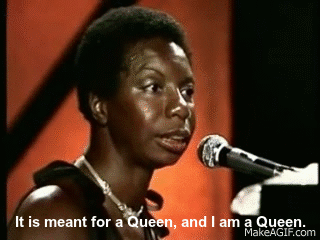
🐘 nina simone: uttara ashadha chandra
💪🏽 these natives are no stranger to standing up for the injustices of their era. while surya natives do struggle with unwanted expectations and internal dichotomies, this does not discredit the common belief that these natives serve as the celestial father who provides the vital force behind creation and its sustenance. surya natives’ strong will and individuality, coupled with their boldness and ambition, creates a wonderful passion for advocating for what they believe in. think of uttara ashadha native nina simone who was both musically talented and an advocate for civil rights. she used her talents and fame to shed light on a greater cause. simone once stated, “i had spent many years pursuing excellence, because that is what classical music is all about... now it was dedicated to freedom, and that was far more important.”. nicki minaj, another uttara ashadha native, is often regarded as the queen of rap and is known for advocacy for women’s rights and power. in an interview minaj said, “when you’re a girl you have to be everything… you have to be sexy, and you have to be this and you have to be that, and you have to be nice. it’s like, i can’t be all those things at once. i’m a human being.”. joan jett (an uttara ashadha native) stated: “i figured out it was a social thing, what women were allowed to do. at a very young age, i decided i was not going to follow women's rules.”.
🍯 this behavior correlates to one of the ten vishvadevas: kratu. kratu is the deity representative of strength. rishi kratu appeared in two different ages. kratu is one of the seven great sages (the saptarishis). these sages are said to have originated from the consciousness of brahma. kratu is sometimes even believed to have been born from his father's left eye. kratu was married to sannathi and it is believed the couple had sixty thousand children, which are referred to as balakhilyas. the balakhilyas were said to be the size of a thumb and lived alongside the bank of rivers. the balakhilyas were once insulted by deity indra, the king of celestial deities. by the power generated by their penance, they were able to please shiva. in turn, shiva gave him a boon that they would be able to produce a bird who could pull out the cosmic nectar from indra.
🪓 the story goes that prajapati daksha was the head of sacrifice. prajapati daksha held a grudge against rudra or (depending on the story) for his daughter sati marrying shiva against his wishes. prajapati daksha did not send even an invitation to shiva for the sacrifice. sati went to the sacrifice alone and was terribly insulted for marrying shiva by her family. sati then k*lled herself by by jumping into the sacrificial fire. upon hearing the news of sati, lord shiva became madden with rage. shiva pulled out a lock of hair from his head and threw it down, invoking the spirit of veerabhadra (or bhairava) shiva ordered veerabhadra to go with his followers and destroy everybody who attended the sacrifice, including prajapati daksha himself.
⚔️ veerabhadra and shiva’s followers then went and beheaded daksha. they began to punish each and every god who attended the holy sacrifice. they knocked out the teeth of pushan, removed the eyes of bhaga, and severed the two testicles of kratu. soon after, the gods went to shiva and begged for his mercy. shiva said that they should all serve under him as animals for a period of time; only then would they will regain their original status. all of the gods agreed to this. shiva then restored the teeth, eyes, and testicles of the different gods. daksha was also revived by placing the head of a goat on his neck (more on this in a later post). after kratu’s testicles were restored, he married sannati, the daughter of daksha. they were all described as small sages no bigger than the joint of the thumb and said to be chaste and pious.
⚱️ later on, rishi kratu was again born in the vaivasvata manvantara (seventh and current manvantara), due to lord shiva’s boon. in this cyclic period of time, kratu had no family. it is reported that kratu was born from the hand of lord bharma, whereas the other rishis are said to have been born from other parts of the body of brahma. because kratu had no family and no children, he adopted agastya’s son: idhvaaha.
⚒ uttara ashadha natives understand that sacrifices have to be made for the betterment of society, as the many gods were sacrificed by participating in the harmful behavior that caused sati to jump into the deadly fire. specifically, these natives understand the sacrifice of career and monetary stability for this cause. these natives learn to reject traditional associations of femininity and masculinity and learn the essence of all life is an equilibrium of both (symbolic of kratu being castrated, thus having the phallic force being altered). uttara ashadhas act as brahma’s hand in which birthed the deity of strength (kratu), by lending a helping hand to those in need and never forgeting the importance of where they come from. famous singers like nicki minaj, joan jett, and nina simone understood this and frequently put their careers on the line to ensure they were treated with the utmost respect. modeling the sacrificial sati, nina simone sacrificed her career in singing to devote her entire life to advocating for civil rights and joan jett devoted her entire career to breaking gender norms and stereotypes. what people fail to understand is the integrity these women have. whatever surya women choose to do, they will stand by their decision and suffer the consequences. they understand in order to command respect, you must garner accountability. the act of activism arguably runs much deeper than jupitarian women. as kratu was once said to have no family and be alone, surya natives feel the need to guide others as they wish they could have been guided at a young age. these natives choose to adopt the burdens of the collective masses (as kratu with idhvaaha). they struggled with jealousy and male dichotomies and fantasies. they endured years of abandonment, loss, and energetic vampires sucking the light from them. only to shine like the bright stars they truly are, reaching their latter victory and choosing to never leave anyone behind or forgotten.
i highly encourage you to watch the clip below because it perfectly illustrates hows surya-ruled women understand the inadequacies and injustices of this world and decide to use their platform to speak on it:
https://youtu.be/PzGZamtlRP0

🐘 sza: uttara ashadha lagna
🎖the latter victory is quintessential, yet individualistic, to uttara ashadhas. throughout all areas of the life, these natives succeed in unimaginable ways. from sports, modeling, singing to activism and acting, they reach the highest possible success. once these natives have mastered the lessons of the planets shani, brihaspati, and surya, they have to learn from one more deity: yama. recall the foundational essence of yama reoccurring throughout this post, the elephant, bhairavi, and yama’s correlation to mahapudma. it is said that in order to examine the polarity of a nakshatra, you must examine the opposing nakshatra as well. the opposite of uttara ashadha is pushya (and punarvasu). both punarvasu and pushya are considered to be highly auspicious nakshatras. punarvasu is able to encapsulate the transition from destruction (ardra) and nourishment (pushya) with blessings of the motherly aditi and the supervision of brihaspati, but what happens when pushya is also into the darker elements of life?
🎯 both punarvasu and pushya are linked to brihaspati, due to punarvasu being ruled by brihaspati (via vimshottari dasha) and pushya being under the deity rulership of brihaspati. as i discussed on twitter recently, pushya is directly linked to funerals and morticians. the fourth house of cancer is said to be eight houses away from the twelfth house. thus, denoting one finding home, roots, or comfort in times of death or misfortune. the deities associated with shani are yama and prajapati. yama represents death, dharma, and the underworld and prajapati represents rebirth and creation (modeling the transformative themes of punarvasu as well). the deity of pushya, brihaspati, is said to be a sage born from the first great light, as punarvasu’s meaning is said to be “prosperous again” or “return of the light”. brihaspati is said to be the one who drives away darkness. pushya natives embody brihaspati by bringing great healing and comfort to those in terrible times. or they may embody yama and become hyperfixated with the themes of death. recall how angelina jolie (pushya lagna) stated she wanted to be a mortician when she grew up. a famous funeral director, marshall white, is likely a pushya chandra. a convicted m*rderer & mortician, bernie tiede, is a pushya surya.
🪦 uttara ashadhas marry and reflect the saturnian and jupitarian in a differing, but similar, way. throughout this post, dharma has been mentioned frequently. it is difficult to exactly provide a single definition for dharma, as the word has a long history and it’s interpretations vary throughout hinduism, buddhism, sikhism, and jainism. there is actually no equivalent synonym for dharma in english. the root of the word dharma is "dhri", meaning “to support, hold, or bear". dhri is what regulates the course of change by consistently abstaining from change. however, most can agree dharma means the “right way of living" and "path of rightness". this also depends on the context and the meaning of dharma, as it has evolved as ideas of hinduism have evolved through history. in the earliest texts and ancient myths of hinduism, dharma meant cosmic law, the rules that created the universe from chaos and rituals. after time, the meaning became more complex, it is said to designate human behaviors considered necessary for the order of things in the universe; principles that prevent chaos; and behaviors and actions necessary to all life in nature, society, and family.
🔪 whereas, yama is considered to have been the first mortal who died and saw the way to the celestial abodes. due to this, he became the lord of the departed. yama's name can also mean "twin", and in some myths he is paired with a twin sister names yamī. yama is assisted by chitragupta who is assigned with the task of keeping complete records of the actions of human beings on earth. upon the death of humans, yama decides if they shall reincarnate as a superior or inferior organism, depending on their actions on earth (karma). this is why yama is considered to be the lord of justice and is sometimes referred to as dharma, referring to yama’s unwavering dedication to maintaining order and his adherence to harmony.
🏹 like punarvasu and pushya, uttara ashadhas wish to guide others through their path of dharma, as the bow of brihaspati navigates through the winds, but they also struggle with neglecting themselves. they are so giving with their fruitful bounty, they often forget to spend time within. their inclination for guiding, giving, and dying unto oneself often becomes a fixation that eventually leads to burn out and tiredness. this is why uttara ashadha natives must study the nature of yama and learn when to set healthy boundaries. i will not be including the hymn of yama and yamī (the children of the sun god: surya) as to not trigger others with it’s inc*stuous nature, but it is an example of how those with saturnian/jupitarian influences must learn to set boundaries, even with those they love. sza’s (uttara ashadha lagna) “ctrl” album is a perfect example of the potential for vulnerability, imperfectness, and the deep capability of love these natives exhibit. i highly recommend listening to her songs “love galore”, “normal girl”, and “garden”, as they directly reflect the topics i have discussed in this post. learning to set boundaries will be difficult, as many of the times this creates a need to have difficult conversations with those we love. but when we align ourselves under the eyes of surya, we learn it is the key to flourishing into the tree of life.

🐘 sade adu: uttara ashadha surya
🌲 the movie “the tree of life”, stars multiple surya natives (including uttara ashadha chandra brad pitt). the movie tells an impressionistic story of a texan family in the 1950s. the film follows the life journey of the eldest son, jack (played by leo chandra sean penn and an uttara phalguni native and uttara ashadha atmakaraka hunter mccracken), through the innocence of childhood to his disillusioned adult years as he tries to reconcile a complicated relationship with his father (brad pitt). jack finds himself to be a lost soul in the modern world, seeking answers to the origins and meaning of life while questioning the true existence of faith.
🪵 the tree of life emblem is a popular, universal symbol that represents differing meanings across all cultures and religions. the symbol does not originate from one specific culture as it has been used all over the world for centuries. the tree of life is said to commonly represent the interconnectedness and intertwining of everything within the universe. it is symbolic of togetherness and serves as a reminder that you are never alone or isolated, but rather that you are connected to all beings in existence. the roots of the tree of life are deeply grounded and spread into the core of earth. by accepting the nourishment from mother earth, the tree’s branches reach up into the sky, accepting energy from the lights of both the surya and chandra. this correlates to the goddess matangi (who is the tantric form of saraswati). saraswati is the mother goddess of knowledge, wisdom, and the arts. one cannot grow solid roots without the foundational knowledge of life and nourishment (saraswati). with a solid foundation in place, the tree of life symbolizes the connection to one’s family and ancestors (ketu). the tree has an intricate network of branches that represent how our lineage grows and expands over time. trees will always find a way to keep growing, through seeds or new saplings, and is lush with greenery, which signifies its ancient fertility.
🌧 all trees are unique and special. by their branches sprouting at different points and in different directions, they symbolize a person's personal growth into a unique human being as different experiences shape them into who they are destined to be. as time passes, both trees and ourselves gain more unique characteristics, as branches may break off, new ones grow, and as the weather takes its toll. during these alterations and changes, the tree remains steadfast and sturdy. as shani brings about trials and tribulations, people grow and change throughout their lifetime and their unique experiences mold and enhance their individuality. the tree of life loses it’s leaves and appears to be dead during winter, but after this trialing period of winter, new buds appear and fresh leaves unfurl to reveal their emerald-like beauty (matangi). this cyclical nature represents the beginning of a new life and a dawn of anew. in a way, the tree (our souls) is immortal. even though the tree may grow old or slightly wither, it still produces seeds that carry its essence through the figurative winds of prana. as the tree within us may never die, it shall only transform and be reborn.
🌊 at the end of the movie, “the tree of life”, the now adult jack wanders through a wasteland, as yama once died and symbolizes the purgatory state of the wasteland. jack goes through a doorway and finds himself on a beach. there he shares the screen with his father and mother who concedes her son to the higher power. jack realigned himself with his solar power and gleamed in the light of his mother and father, like the tree of life gleams in both the sunlight and moonlight. jack received the blessing of his mother, symbolic of the goddess saraswati, who offered him into the unknown light of yama. the truth is, most of us do not know what truly happens after we step into the final light, thus ending our earthly presence and accepting the unknown of the future. recall from earlier, fire is said to digest sensory impressions (water) and turn them into purposeful thoughts and ideas. as surya is said to calm the waters of the mind (chandra). jack’s alignment from the beach to heavenly light symbolizes he has finally digested and successfully pondered on his actions throughout his existence. he has calmed both the waters and fires within and is granted the true passage to afterlife.

🐘 nicki minaj: uttara ashadha lagna
⛰ it is now the native has returned to the peak pyramids of life. they have reached the zenith of their soul and look down from the symbolic pyramid to see the differing trees of life. they examine the highs and lows, sadness and happiness, and the polarities between chandra and surya. prana enshrouds the pyramid and blows the luscious, warm leaves of the trees around in the autumnal season. it is only the uttara ashadha native that will be left to see how far along they have come. in the beginning, uttara ashadhas were the lonely mongoose who simultaneously felt they belonged to everyone and no one. they tried to embody the personal surya to others and learned the error in their ways. these natives were there to lend a helping hand to others, no matter what that sacrifice entails. they have worn the masks of ketu, travelled as the head elephant leads his group, and now stand before the cosmic fire. the mongoose is no longer sad in his sedentary ways, he is fearless, in the sense his open to all feelings from deep love to intense sorrows. may you uttara ashadhas abide in your satya and may the strength of the vishvadevas guide you further into the unknown.
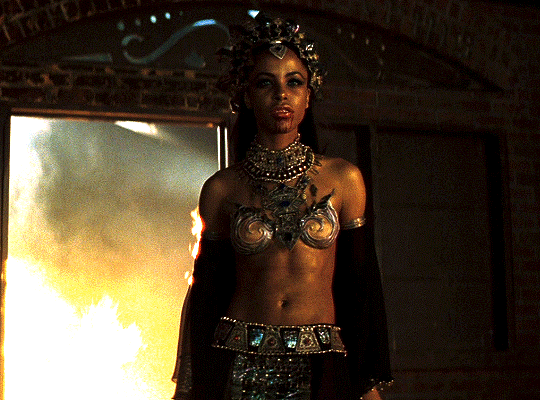
🐘 aaliyah: uttara ashadha surya
💋 as always, i am open to any constructive criticism! i tried to touch on the deities’ involvement in the appearances, manifestations, and symbolism of uttara ashadha. like the endangered elephant and the elusive mongoose, uttara ashadhas are a rare kind. they embody the true abundance of yang that is secure in their solar nature and path. people will latch on to their brihaspati, shani, and surya qualities, as they understand that these energies guide their environment to follow the behavior of the native (as a male elephant leads his family unit to safety and prosperity). uttara ashadhas are so kind, warm, and giving and you guys truly do not get the love you deserve. boundaries will be very important to these natives, as they are so giving (solar) with their knowledge and wealth (brihaspati), they must learn to set healthy boundaries (shani) to avoid burn out. if you are looking for more information about uttara ashadha, get to know the overrulers and supreme deities of surya, agni (fire god) and shiva (supreme god); brihaspati, indra (king of the gods) and brahma (law giver); and shani, yama (the god of death) and prajapati (the creator). also—and i cannot stress this enough—familiarize yourself with the deities of this nakshatra: the vishvadevas. if any of my placements or information are incorrect please feel free to let me know! also, i am fully aware of the origins of vedic astrology and if i was in anyway disrespectful to hindu culture, i will take down this post immediately. i am incredibly honored to know such lovely vedic astrology enthusiasts. you all mean so much to me xx
**all of these placements were found using astrotheme/.com and/or astro-charts/.com. it is important to note that some chandra (moon) placements may be off by up to 6 degrees and lagnas (risings) as well, due to the fact that many websites do not have 100% accurate birth times for the given celebrities.
**i take absolutely no credit for the invention of vedic astrology-based appearance profiles. please watch claire nakti on youtube or look into @/cn0bles, @/lovejustlied, @/dh4nishta, and @/vanillemercure on twitter for more in-depth analysis on vedic astrology xx
“i’ll tell you what freedom is to me, no fear.” - nina simone (uttara ashadha chandra)
xoxo, angel <3
#also why sun women and saturn men go so well together because naturally these men allow sun women to be themselves without forcing any#expectations onto them theres also a sense of understanding that sun women harbor a lot bc they do as well#ofc this is just what I see from the relationships of the sun women I am around and me being a sun women myself#so take everything i say w a grain of salt!! women everywhere are expected to conform to societal expectations of the ‘cool girl’#cant lie though sun women get it from men AND women😭 look at how they treated megan fox or lori harvey or Sydney sweeney#we cant catch a break 💀#vedicastrology#nakshatras#capricorn#uttara ashadha#uttara phalguni#krittika#uttara ashadha nakshatra#astrology#thoughts
563 notes
·
View notes
Text
Basic themes of nakshatras
May edit this later, this is as far as I understand and have observed them, and I think it's pretty nice to see them simply.
Ashwini:
Newness, freshness, the unmanifest, speed, energy, vitality, instinct, healing, fast healing, unlimited energy, self-expression, selfishness, blocking outside noise, trusting yourself, self-empowerment, unfiltered actions.
Things that remind me of Ashwini: bees, the sun, horses, two white horses, golden deserts, horses gallopping, honey, long hair flying in the wind, apples.
Bharani:
Love, death, sex, the female, the feminine, limitations, the material, fate, destiny, coming into the body, struggling against limitations, struggling against fate, mind trapped in its own hell because of the inevitable, dealing with the harshness of life, harshness of mothers and mother nature, the hierarchy, privileges and deprivations, desire, going after your true desire, the immortality of the soul, adapting to changes, passion, tragic love, bravery, facing the truth, choicelessness, nessecity, revenge, violence, gatekeeping, reduction, denial of access, conquering your fate, everlasting beauty, immortality, eternal love.
Things that remind me of Bharani: hot pink and black, darkness, roses, the yoni, gateways, keyholes, caverns, boats, rivers, the damsel in distress, fantasy, high fantasy.
Krittika:
Adam, the main character, naming things, language, rationality, precision, sharpness, criticism, the poet, the "it" person, simplicity, cleanliness, expressing oneself, selectivity, the heat, the knowledge, the light, masculine ideals, stoicism.
Things that remind me of Krittika: knives, razors, lighers, sparks, fire, hearth, cooking.
Rohini:
Eve, sugar babies, growth, receptivity, enjoyment, pleasure, unrefined, doted on, subconcious, absorbtion, sharing, union, creation, the youngest daughter, naivete, feeling no shame.
Things that remind me of Rohini: sugar, stickiness, sweetness, heaviness, red, pink, flowers, the A.I(lol).
Mrigashira:
Distraction, realization, fickleness, adventure, running away, chasing, the hunt, excitement, softness, pleasure, altering conciousness, magic substances(iykwim), curiosity, fulfillment, insatiability, teasing.
Things that remind me of Mrigashira: silver threads, deer, green forests, green and blue, running in the woods, alcohol, the moon, Shakespeare's "A Midsummer Night's Dream".
Ardra:
Disillusion, crying, lamenting, awareness of others, awarness of other's expectations, hyper-awarness of everything, intellect, the rational mind, pressures from society, rebelling against society, anxiety, hunting.
Things that remind me of Ardra: tears, water, storms, technology, teenage angst, emo culture, the rain, sad songs, dogs.
Punarvasu:
Mercy, forgiveness, permission, freedom, flying, expansion, gentleness, regrowing, realigning, returning, home, unconditional love and nurture, celebration, peace, peacefulness, centering oneself, sunlight, warmth, fostering, taking care, being taken care of, luck, unlimited fertile space, shelter, genuine kindness, believing in humanity again, cycles, patterns, seeing the cycles and the patterns, prophecies, the oracle, openness, second (and third, fouth...) chances, a comeback.
Things that remind me of Punarvasu: staying at home, pets, plants, cats, gentle rain, a bow and arrows, a target.
Pushya:
Asceticism, routines, self-restraint, servitude, control, self-control, working, working on yourself, patience, simplicity, striving for perfection, nurturing, nourishment, quiet ambition, symmetry.
Things that remind me of Pushya: milk, milkmaids, country life, milking, symmetry, goats, sheep, agriculture.
Ashlesha:
Manipulation, abuse, poison, emotional abuse, blackmail, resorting to everything for safety, protection, pent up energy, the nervous system, purity, water, sensitivity, cleanliness, energetic build-up, tension, restraint, preservation, self-preservation, virginity, feminine tactics, being "mean" for protection, lying for safety, sensuality, mother issues, agitation.
Things that remind me of Ashlesha: the color white, transparent things, cats, poisoning, snow white, Sofia Coppola films, teenage girlhood, ties, strings, knots, snakes.
Magha:
Royalty, power, ancestry, family trees, history, the past, regality, honoring the past, honoring the elders, honoring the authority, religion, tradition, customs, confidence, ego.
Things that remind me of Magha: crowns, thrones, churches, goth culture, smoke, big hair(like the lion's mane).
Purva Phalguni:
Pleasure, enjoyment, being spoiled as the feminine, loving to spoil as the masculine, procreation, sex, leisure, art, holidays, parties, exclusivity, pride, charisma, sexual dispersion, love as a method of self-expression, admiration, directness, active pursuit of your passions, indulgence.
Things that remind me of Purva Phalguni: fruits, eating fruits topless, rose gold color, the "rizz"(lol), the phallus, dramaticism.
Uttara Phalguni:
Favors from friends, family and partners, contracts, beneficial agreements, the perfect wife, likeability, popularity, friendliness, appearing cool, stoicism, beneficial arrangements, gain through partnerships, self-expression through relationships, wife/girlrfiend material, harvest, family associations, marriage associations.
Things that remind me of Uttara Phalguni: the "chads", simplicity, genuine friends, loyal companions, family business, the perfect male stereotype, the "rich heiress running away" trope, wheat, gold, power couples.
Hasta:
The earth, the veiled feminine, manipulation, denial of access, materialism, cheating, everyday matters, empowerment of women, deception, skill, seeking knowledge, wanting to be in control, activism, street-smarts, manipulation of masses.
Things that remind me of Hasta: the hand, Goddess Persephone, skilled hands, thieves, easy money, fairies, witches, scammers.
Chitra:
Crafting, building, perspective, truth, law, gems, sacrifice for your craft, vanity, stereotypes, aesthetics, the truth in stereotypes, building based on the law and the truth, the surface of things, the appearance of things, the substance reflected in the vessel, gossip, cliques, tricks.
Things that remind me of Chitra: the god Hephestos, martian gods in general, jewelry, fashion, make-up, drama, pettiness, the coquette aesthetic, pranksters, Olivia Rodrigo(ig).
Swati:
Space, the cosmos, shifting realities, love, rebellion, alternate realities, possibilities, seeing beauty in everything, inspiration, art, the cosmic egg, creation of the world, creation of worlds, microcosm and macrocosm, freedom through love.
Things that remind me of Swati: video games, the wind, plants beggining to sprout, the sword, technology, the Sims.
Vishakha:
The lightning, snapping, splitting, joining opposites, compromise, marriage, repressed anger, repressed aggression, alter egos, passion, enthusiasm, standing up for yourself and others, repression and then expression, energy, love and hate.
Things that remind me of Vishakha: lighning bolts, Zeus, Thor and other lighning gods, superhero "Shazam", celebrations.
Anuradha:
Friendship, devotion, depth, loyalty, unconditional loyalty, bonds, the occult, sex with love, numbers, gatherings, friend groups, groups, gentleness, humbleness, discipline, seriousness, organizing society, social groups.
Things that remind me of Anuradha: the color burgundy, dim lights, bunnies, "Sex Education" (tv show), sci-fi (for some reason), "The Vampire Diaries" (and very similar teen shows), frat boys, cheerleaders.
Jyeshta:
The battlefield, war, hunger, thirst, insatiability, conquering, the underdog, street-smarts, competition, strategy, extreme independence, mind games, the art of war, survival, ruling, rising above, self-reliance, wisdom, becoming the authority, the eldest, dryness, trust issues, enemies, destroying enemies, outsmarting all enemies.
Things that remind me of Jyeshta: grandmothers, owls, eagles, dry places, flags, marching, chess.
Mula:
Horror, the abnormal, the truth, the core, the center, the absorbing darkness, the black hole, the roots, violence against falsehoods, seeking the truth, seeking the cause, seeking roots, uprooting, chaos, from chaos to order, the unchanging truth, taming beasts, holding to your truth.
Things that remind me of Mula: "Phanton of the Opera", "Twilight", final girls, horror movies, dark murky green, the wilderness.
Purva Ashadha:
Art, beauty, alliances, artistry, ideals, fighting for the ideal, discrimination, exclusivity, philosophies about beauty and art, passion for love and art, attachments, secrecy, luxury, vitality, vigor, going for victory.
Things that remind me of Purva Ashadha: the sea, seafoam, goddess Aphrodite, seashells, mermaids, sirens, fans (the ones you hold in your hand lol), Arwen from LotR.
Uttara Ashadha:
Victory, loneliness, individuality, government, empowerment, independence, being looked up to, composed self-expression, ease, simplicity but regality, confidence, self-assuredness, melancholy and hardships of aloneness but contentment, stoicism, invincibility, unapologetic behavior.
Things that remind me of Uttara Ashadha: earnest people, goddess Nike, mint color for some reason.
Shravana:
Connecting everything, secret knowledge, interest in everything, reading between the lines, subconcious access, extreme sensitivity, holding the humanity together, secret agencies, percieving what others can't percieve, saving humanity, navigating, receptivity, mysticism.
Things that remind me of Shravana: Superman, Geralt of Rivia, Aragorn, King arthur, pathways, footprints, ear, color blue, spies, astrology, outcasts, fringe societies.
Dhanishta:
Celebration, celebrities, fame, visibility, aggression, agitation, action, bringing people together, idols, propaganda, wealth from fame, that which attracts attention, public image, benefits and downsides of fame, openness and flashiness, branding, movement.
Things that remind me of Dhanishta: supermodels, Princess Diana, dancing, rhythmic drums.
Shatabhisha:
Complexities, seeing everything, lurking in shadows, holding the knowledge, secrets, secrecy, hiding, technology, innovation, being ahead of your time, advising but manipulating, society, the collective, trends, the conciousness of masses, propaganda.
Things that remind me of Shatabhisha: midnight sky, stars, the seas, water reservoirs, the circle, the all-seeing eye of Sauron(lol), Lord of the Rings, rings, the movie "Stardust" (the book too), the evil advisor/black cardinal trope.
Purva Bhadrapada:
Notoriety, expansion, uncontrolled expansion, persmissiveness, growth to ruin unless restrained, fighting for your soul, the scapegoat, going against society, getting tested, the point of no return.
Things that remind me of Purva Bhadrapada: gangs, famous criminals, laziness, femme fatales, the grotesque, deserts, werewolves, the black sheep.
Uttara Bhadrapada:
Finding grace, hardships, working, inner strength, steeliness, resilience, patience, restraint, contol, self-restraint and self-control, bravery, honesty, stubbornness, fighting for your truth, perfect control, freedom through limitations, seeking a permanent foundation built on truth, working for the foundation, long-term goals, innocence, purity of soul, stillness, refinement, honor and glory.
Things that remind me of Uttara Bhadrapada: butterflies, clouds, baby blue color, Cinderella, warriors, knights, knight orders, ice, coldness, queens, ice-queen, dragons, water dragons, deep waters, deep sea and its creatures, wings.
Revati:
Ultimate freedom, creativity, wisdom, gentleness, compassion, guiding, herding, fun, laughter, mischief, lightnness, ease, finding peace, reaching the end, enjoying what you have, contentment, nurturing, open-mindedness, conclusions, gratefulness, freedom and free will, having choices, diversity, finding the truth, true wealth, parenthood, the guide, guidance, individuation.
Things that remind me of Revati: shepherds, herding, everything easy and light, the tricksters, the fool, jokes, Loki, The Joker, fish, comedy, the movie "A Fish Called Wanda", caring for everyone and everything, light and soft shades of green and blue.
#vedic astrology#astrology#astrology observations#nakshatras#sidereal astrology#astrology tumblr#astro notes#bharani#ashwini#krittika#rohini#mrigashira#ardra#punarvasu#pushya#ashlesha#magha#purva phalguni#uttara phalguni#hasta#vishakha#anuradha#jyeshta#mula#purva ashadha#uttara ashadha#shravana#dhanishta#shatabhisha#revati
2K notes
·
View notes
Text
Future Spouse Based on Nakshatra - Pt. Two
Please read the following for accuracy:
Check for which nakshatra of your dakarkaka.
You may want to check the nakshatra of your Venus (for wife) and Jupiter (for husband) as well.
You may want to read for your moon & AatmaKaaraka nakshatra to see if the traits apply to you.
DISCLAIMER: Keep in mind accuracy is influenced by the ENTIRE natal chart.
PUNARVASU:
General Neutral traits:
Big lips esp lower. Long face - Oval or Oblong. Doe eyes. Larger facial features generally.
Friendly - easily connect with others.
Nurturing. Patient. Quiet. Kind. Considerate.
Likely religious. Stick to their morals over money. Sometimes have traditional values & dreams for the future.
Good communicators.
Negative traits:
Modern society may harshly judge one’s disinterest in materialism. If the disinterest is extreme, this person can have periods of life where they seriously struggle financially.
Some may feel they are so caring that they become suffocating to loved ones.
ARDA:
General Neutral traits:
Bold eye colour. Pointy chin. Often, fit due to their job requiring physical activity (ex: lots of walking)
They can prefer physically working - they may have physical hobbies.
Good memory. Curious person - open to learning/exploring more.
Generally, an honest person.
Negative Traits:
They can be impolite. Or anti-social to a point where they sometimes appear rude.
Like to indulge - must watch for overspending/overindulging in bad foods or bad habits.
Spend early life only looking out for themselves. Later in life, they undergo transformation to change for the better. Become more compassionate and religious/spiritual after a traumatic event.
MULA:
General Neutral traits:
Often the most conventionally attractive in their family. Full lips. Small almond shaped eyes.
Clever. Good communicators.
Gain a good amount of wealth. Live comfortable.
Adventurous yet cautious.
Determined to reach their goals.
Negative traits:
Can be too focused on their goals. Neglect themselves and others until they see success. Others work and help is not always appreciated.
Self-destructive habits need to be broken. A few EXAMPLES: Stubborn to the point of being arrogant. Some have issues with lust & greed. Some have issues with anger.
MAGHA:
Full lips. Dramatic eyes - can have dark circles, bold eye colour or big eyes. May appear tired. Innocent looking.
Often well liked. Likes attention. Entertaining person. Funny, witty, good at conversation.
Optimistic. Generally, stays true to their word - reliable.
Generally, gains moderate to high levels of wealth.
Negative traits:
Hot temper. Prone to feeling jealous.
Ego can be a problem.
Subconscious superiority complex when born into wealthy family. When wealth is gained themselves, they feel still feel superior but not as arrogant.
SWATI:
General Neutral traits:
Large eyes. Innocent looking. Youthful appearance. Close set eyes are likely. Prominent chin.
Independent. Good morals. Honest. Disciplined
Friendly. Optimistic. Persuasive communication.
Negative traits:
Disinterested in their family origins. This can change later in life when they have their own family.
Must learn to not over indulge - over spend/overdo.
Prone to isolate themselves due to being focused on their own personal goals/desires.
CHITRA:
General Neutral traits:
Attractive. Commonly, have dimples. Prominent front teeth. Well groomed. Good style. Conventionally attractive.
Charismatic. Social. Independent.
Well educated. May not be formally. They may seek out good literature & art. They can enjoy philosophical ways of thinking.
Usually are a younger sibling or an only child.
Negative traits:
Vain. Can be overly worried about body and style. Can overthink in general.
Observant nature makes them very critical of everyone. Ego can be a problem.
Well known. But very few true friends. Many friends turn into enemies throughout their life.
Sometimes there can be issues related to fertility in these people’s lives.
PUSHYA:
General Neutral traits:
Prominent eyebrows. Medium to wide set eyes. Generally attractive. Unique looking.
Generally, likeable. Polite. Prone to over-talking, not listening. Intuitive. Intelligent. Helpful.
Generous & Compassionate. Stands up for people. Stands up for what they believe in.
Negative traits:
Sensitive. Often view themselves as a victim. Making it difficult to accept criticism & move forward in life.
Insecurities make them doubt their self worth.
UTTRA ASHADHA:
General Neutral traits:
Strong jawline. Often hooded eyes. Long nose.
Disciplined. Hardworking. High goals. Optimistic. Generally, appear modest.
Good communicator. Popular. Often gain respect&influence at a later age.
Confident. Independent.
Good in leadership roles. & interest in helping others - social causes.
Negative traits:
Over indulgent.
Prone to overthink/anxious.
Will experience relationship struggles - often many relationships before finding the correct person for them.
UTTARA BHADRA:
General traits:
Attractive. Ethereal look. Innocent look. Wide to medium set eyes. Sharp jawline. Thin to medium lip. Strong bone structure.
Deeply empathetic but may not express it.
Strong & silent type. Have the ability to control their emotions - will do what is best for the family. As a result, often benefit from other people's money & resources - ex: inheritance or gifts.
Disciplined & hardworking. As a result, make a good level of wealth.
Rational. Good at giving advice. Stays neutral.
Generous person - often have good karma, it said they will defeat any haters/enemies.
Negative traits:
Struggle to express oneself can leave one feeling lonely & isolated. Repressed emotions can lead to emotional outburst later in life.
May unintentionally create many enemies throughout their life.
ANURADHA:
General traits:
Bunny teeth. Tall & muscular. Innocent looking. Generally attractive.
Independent & Confident. Often feel a strong sense of purpose. Determined & hardworking.
Passionate & protective. May be married to their achieving their “purpose” though.
Often desire a partner that is similarly hardworking & passionate about their work/goals.
Negative traits:
Requires to learn balance in their life. Can be overindulgent - potential examples: can enjoy gambling or unhealthy foods.
May have a slight controlling & possessive nature.
Worry a lot. Could experience periods of having difficulty managing anxiety throughout their lives.
ASHWINI:
General traits:
Full cheeks - often have a baby face through their 20s. Cute. Bold eye colour. Youthful.
Idealistic. Independent.
Adventurous. Youthful energy. Humorous. Often joyful.
Nurturing nature. Deep love for family.
Does well financially. Action orientated.
Negative traits:
Vengeful. Doesn’t forget or truly ever forgive. Many relationships turn sour throughout their life.
Impulsive. Short tempered.
#astrology observations#astrology#vedic astro observations#vedic astro notes#vedic astrology#nakshatras#punarvasu#arda#mula#mâcha#swati#swati nakshatra#chitra nakshatra#pushya#uttara ashadha#uttara bhadrapada#anuradha#ashwini
753 notes
·
View notes
Text
S*x Work/K*nks of Dominant Types
Moon Nakshatra: Cuddlers, Possibly Mommy/Daddy roleplayers
Mercury Nakshatra: Whips, chains, BDSM, leather
Venus Nakshatra: Choking, Hitting, Biting, blood sharing
Jupiter Nakshatra: Praise Kinksters, Dominants
Saturn Nakshatra: Submissives
Sun Nakshatra: Voyeurs
Mars Nakshatra: Just intercourse. Hours.
Rahu Nakshatra: Masturbate. When they're with other people, they'll need guidance because they act as if they're brain shuts down when they see a sexual organ.
Ketu Nakshatra: Pay em or barter. You want s*x with them, offer to fix their plumbing or something. Clean the house. Yadda yadda.
Each Nakshatra as well has their own preference, but this quicker to post 👍
Also, for people that may want to go into s*x work one day.
#Ashwini#krittika#bharani#purva phaguni#purva ashada#uttara ashadha#uttara bhadrapada#magha#ardra#rohini#hasta#shatabisha nakshatra#punavarsu#Vishaka#vedicknowledge#vedic thoughts#vedic astrology#astrology#astro observations#vedic observation#astro notes#sidereal astrology#nakshatra#vedic notes#mrigashira#chitra#dhanishta#swati#pushya#anuradha
316 notes
·
View notes
Text
Wow omg wow
I am a firm believer that the Ascendant or a planet in the 1H can represent your name or any name you take on.
159 notes
·
View notes
Text
Sun Dominant Themes — 𝐍𝐚𝐤𝐬𝐡𝐚𝐭𝐫𝐚 𝐎𝐛𝐬𝐞𝐫𝐯𝐚𝐭𝐢𝐨𝐧 𝐒𝐞𝐫𝐢𝐞𝐬 (part 1) 𝐨𝐟 𝐩𝐚𝐫𝐭 𝟔
Understanding why planets exalt in certain nakshatras, and houses, will give you an even better foundation for all nakshatra lords. For example, Venus loves being in Revati because this is where it can be unrestricted and as flourishing in its themes as it desires to be, since Revati is peak freedom and transcendence; Ketu loves being in Jyestha because this Scorpio nakshatra continuously releases so much heat which allows it to function at its highest level; and Sun is its best version when it is in Ashwini, because this Aries nakshatra allows the Sun to be as hyper-independent and selfish as it desires to be, and Ashwini being Ketu helps one attract resources to further advance oneself — a theme I am seeing in all the Sun nakshatras.

The symbol of Krittika nakshatra is a sharp knife, and its deity is the fire god, Agni. This emphasizes the heat in Krittika which is connected to its transformative nature. This is seen in the refinement of blades, where the beginning stages involve forging – the process of heating and shaping of the metal – and then heat treating. Resources are used with precision in Krittika, anything unnecessary being cut away as resources are channelled with focus so that one rises to the top. The ruling deity of Uttara Phalguni nakshatra is Aryaman, the guardian of social contracts and hospitality. Aryaman is a solar deity, giving more emphasis to the life-giving heat and brightness of this Sun nakshatra. With Uttara Phalguni, resources are built and sustained through agreements, partnerships and community. Creating mutual connections and valuing generosity will lead to later pleasures, as this nakshatra is symbolized by the back legs of a cot and the word Uttara in Sanskrit can mean "latter," "subsequent," or "final." Uttara Ashada is ruled by the Vishwadevas, the universal gods, this indicating the superior, hyper-independence and highly resourceful nature of this nakshatra. This enables mastery in resource mobilization and strategic planning.

Uttara Ashada Sun Orlando Bloom portrays the character Will Turner in Pirates of the Carribean, who starts out as an accomplished blacksmith by trade – his fantastic swordsmanship a product of his work with tangible resources like metal and tools, demonstrating his ability to make effective use of his environment.
The agency of the self and one's independence is due to the aftermath of the Ugra nakshatras having burned away previous barriers & roots, killing off enemies in order to pour into the world through love, beauty and creativity (Venus themes). This propels Sun nakshatras to be unbound, having them focus on making anything into a useful resource, so that one's inner solar light aligns with their material plane. This is interestingly explored in films through the so-called "American Dream".

The "American Dream" refers to the belief that anyone, regardless of their socio-economic status and background, can achieve their dreams and make a better life for themselves in a society where upward mobility is accessible to all. The core ideals of this belief are explored in the film The Pursuit of Happyness, starring Uttara Phalguni Sun Will Smith who plays a struggling salesman rising from poverty to attaining professional success as a stockbroker — his character being driven by persistent effort, ambition, and belief in upward mobility.


The theme of the human spirit's resilience in the pursuit of personal dreams is also seen in the film Forrest Gump, starring Uttara Phalguni ASC Tom Hanks who plays a low IQ man who goes through many challenges and still never gave up on his dreams.
Sun nakshatras are more commonly associated with strong themes of ambition, leadership and success.

Aja Naomi King has Uttara Ashada Sun and Uttara Phalguni Moon, making her a dominant fire rashi native. She portrays the character Michaela Pratt in How To Get Away With Murder. She is a young woman who is an ambitious overachiever, possessing an intense fire in her and is relentless in chasing after her goals with focused determination.

The character Paris Geller from Gilmore Girls, portrayed by Uttara Ashada Moon native Liza Weil, is known for her relentless ambition, being an aggressive perfectionist, and possessing a fear of failure which mirrors Michaela Pratt’s personality, often the cause of her clashing with others.

Sun natives are able to sacrifice and delay gratification for their goals. The elephant tusk of Uttara Ashada represents enduring strength, the nakshatra also being in the first section of the Capricorn rashi (Saturn supporting themes of endurance and delays). Uttara Phalguni's symbol is a bed or hammock, which represents the rest after hard work and generosity, completing the journey from Purva Phalguni in this final stage. And Krittika being the blade, or razor, signifies it as a cutting force able to slice through obstacles, fuelled by a desire to execute excellence.

Daniel Plainview in There Will Be Blood exemplifies the darker, more ruthless and capitalistic side of this "American Dream" — operating more Ketuvian as he is portrayed by Ashwini Moon native Daniel Day Lewis, drawing parallels with Ashwini Moon Christian Bale in American Psycho (further emphasizing why the Sun exalts in Ashwini, as Ashwini possesses this pure, ungovernable and all-consuming masculine energy which can become self-building).

The book Oil! follows the son of an independent oilman who initially idolizes his father's rise to power which has a rags-to-riches quality to it. The book highlights the nefarious strategies that oilmen employ through the main character's sympathy towards the underdog people (oilfield workers), a solar theme which will support further points I'll be touching on. But this corruption of the self from accumulating so much intoxicating power is definitely the darker side of Sun nakshatras.
The character Plainview uses oil as a lucrative resource and leverages it to build his empire, also coming from humble beginnings. He embodies this 'self-made', hyper-independent archetype in which hard work highlights one's determination and ability to turn opportunities into wealth. But the writer of the film, and the author of the novel Oil!, shine light on the emptiness and loneliness of this accumulation.

In the story, The Great Gatsby, the character Jay Gatsby initially comes from a poor background, and he meets a high-status woman who he falls in love with. She becomes one of the reasons for his drive, shaping his desire to escape poverty and become successful.

Uttara Phalguni's ability to outwardly evolve to positions of power and have access to things which are symbolic of pleasure and luxury emphasizes the inward radiance and resilience they possess to overcome challenges.
There is a Solar archetype which possesses a type of independence and a resourcefulness that doesn't translate into dominance, but rather into strictly following one's own path of righteousness — remaining strong willed no matter the people one is surrounded by. And there is a level of generosity and duty to this archetype, as Surya, the Hindu Sun god, embodies Dharma (which is related to duty, righteousness and upholding truth).

Will Turner fully embodies this archetype. Even when he's surrounded by pirates, and learns of his familial background of piracy, he stubbornly sticks to what he believes is right. His character has consistently been a strong moral compass in the franchise, upholding righteousness and truth — pointing to the higher leadership and moral integrity important in Uttara Ashada, as this nakshatra is ruled by the Vishwadevas, who are believed to reward those who follow moral principles and righteous paths.
Being burdened with so much duty, Surya (the Sun god) has to endure distant relationships with his close familial bonds. Will Turner mirrors this exactly, his duty as the Captain of the Flying Dutchman (a powerful evolution of his character as he initially started as a humble blacksmith) binds him to a duty higher than his mortal life. Because of this, he could only see his son and wife every once a decade, much like how Surya cannot be close to his sons and spouses.

A lot of sacrifices that they endure include cutting away human attachments, although this archetype is moreso explored from the hyper-independent lens in Claire Nakti's Sun Dominant Men video, as they voluntarily become absent fathers/deadbeats from their inherent selfishness — very much opposing the ideals of many Sun gods, but a correct negative manifestation nonetheless.
All Sun gods support this solar archetype of justice, leadership and source of nourishment. Helio, in Greek mythology, personifies the Sun, bringing light to the world, also regarded as the god of sight. Surya is a source of vitality and justice. Ran, the Egyptian Sun god, serves as a great protector, encompassing intense sun rays which ward off evil.
Characters which embody this protective, superior force are often played by Ketu and Sun nakshatra natives (and as Ketu nakshatras are seen as dominant forces in nature, we see how Sun nakshatras adapt in isolation, and become dominant as well, using tools and resources to remain resilient). Claire Nakti already explored this with Mula's connection to Hercules, while I connect the nakshatra Uttara Ashada to characters such as Robin Hood & Tarzan. Just as the Sun gods symbolize a life-giving energy which keeps stability in the universe, George of the Jungle and Tarzan are characters who both protect the jungle and its inhabitants from poachers and other humans with bad intentions — their presence alone warding off evil. Both characters serve as guardians to ensure harmony in the jungle.

The elephant tusk (of Uttara Ashada) often signifies, in many cultures, the protection of wildlife, especially from those who want to exploit and dominate nature. It also symbolizes a tool for survival, and it is associated with higher stature and power. This theme of one being the source of life and resources is seen in Robin Hood, a character which has Uttara Ashada influence. Robin Hood is known for safeguarding the well-being of his community, ensuring that their nourishment and dignity is preserved as he distributes wealth from the rich to the poor.

The bridge between Purva Ashada and Uttara Ashada could be represented by the purpose of Sagittarius — the archer aiming straight for victory. Uttara Ashada can be the release of the arrow, the culmination of focus to execute the final victory, as its stars lie close and pointing to the Galactic Center (signifying the bullseye). Uttara Ashada carries the final stage of the archer's triumph, embodying this legacy after the swift release of the arrow.

Much like Tarzan and George, Robin Hood lives in nature. Sun makes one completely self-sufficient, free from societal and religious roots which holds one back from finding their true essence. And the forest or woods represent a place one can explore their true selves and burn away what's false. The dominance of the Sun is seen in these characters' ability to comfortably live in such a place full of hidden threats like wild animals, bandits, or poachers. While for Ketu this theme signifies their huntress and taming power over the wild, for Sun it signifies their radical freedom and adaptability. Living in the forest, Robin Hood represents the figure of the outsider.

In the 2011 film Red Riding Hood, the character Peter is a woodcutter who embodies the archetype of the lone wolf. He is portrayed by Krittika Moon & Uttara Ashada ASC native Shiloh Fernandez. He knows the forest very well, and is often associated with the pure, wild aspects of it. He is very much like George of the Jungle, in that his love interest is also played by a Magha native, which I found this Sun-Ketu association very interesting.

His free nature and rough exterior (representative of his authenticity, making him a misfit in society) is what misleads the viewers into thinking that he is the werewolf that's been killing the townsfolk, but the truly animalistic and consuming force of the story is the character played by Ashwini Moon Billy Burke.
This lone wolf archetype supports their ability in being resourceful within their surroundings, often seen in survival stories in which the Solar native is stranded and is literally isolated from civilization.

Blue Lagoon (1980) is a survival film about two children living on an island after a shipwreck. Krittika Moon Christopher Atkins plays Richard, who becomes deeply attuned to the rhythms of the island, learning how to make use of the natural resources for their survival.
In the film Mad Max: Fury Road, Uttara Phalguni Sun Tom Hardy embodies this lone wolf archetype through the character Max. The story has a hyper-patriarchal system which is built around the hoarding of resources and exploitation of others. Max is completely removed from this society, prioritizing his own survival and maintaining his autonomy above all else.

His detachment makes him representative of someone who can solely rely on their resourcefulness and sharp instincts. This film is great as it stars two Phalguni natives; the character Furiosa being portrayed by likely Purva Phalguni ASC native Charlize Theron. Her warriorship is based around seeking a better future for the feminine, which is marked by love and autonomy.
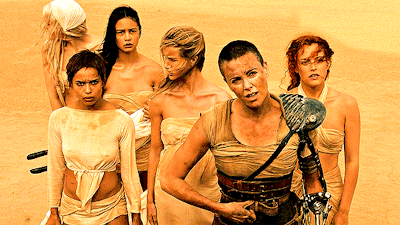
Furiosa, being Venus and an Ugra nakshatra, represents the fight for liberation and happiness, particularly on the freedom of Immortan Joe’s enslaved women, and her own freedom from such a restrictive society unfit for the feminine. The women's rejection of the patriarchy mirrors Max’s independence outside the system. Initially, he aligns with her merely out of necessity as she and the wives possess resources beneficial for his survival. But he treats them as equals, recognizing their autonomy and agency. Max's collaboration with them emphasizes Uttara Phalguni’s purpose of creating alliances and partnerships for higher purposes, supporting the journey that started from Purva Phalguni nakshatra.

After aiding Furiosa, Max returns to his hyper-independent lifestyle; burning the attachments he formed with the women, and returning to his path that is away from the society.
This ability to survive by oneself, to reshape one's environment, mobilizing resources even in barren circumstances, is a theme for Sun nakshatras — further exaggerating this lone wolf, mysterious archetype (as seen with Max in Mad Max: Fury Road and Peter in Red Riding Hood).

The Sun is the natural giver of light and energy, but it does not receive light in return. Solar natives, often being so self-sufficient, give to others but rarely lean on them for much support. The character Elliot Alderson from Mr. Robot is a hacker, his final achievement towards the end of the series making him a modern day Robin Hood. His mission to expose corruption and empower the oppressed is akin to the Sun being a source of illumination, Krittika especially being known to cut away illusion. He is played by Krittika Sun Rami Malek.

Elliot remains emotionally isolated, as he has noticed that anyone who gets too close to him burns in the end — very similar to how the Sun god, Surya, burns and shines too brightly that his wife, Samjna, runs away from him. Elliot's solitary nature makes him feel extreme loneliness, but he maintains a distance from others, his hyper-independence stemming from his traumatic past and his mistrust of others.
There's a genre of film which explores the cause of such imbalanced independence, much like how Max's reason for burning attachments being due to trauma and previous lose. Christmas Carol movies often have Sun natives casted in them, portraying characters that possess a level of misanthropy and selfishness which drive them into further isolation.
The famous character, Ebenezer Scrooge, is a miserly, bitter, and cold-hearted old man who despises Christmas as it is associated with things of generosity and happiness. His name has literally become synonymous with selfishness, cynicism, greed and a lack of compassion. Ebenezer leads a solitary life, being estranged from family and detached from community due to his cold demeanour and focus on material gain. A Christmas Carol is a tale of Scrooge's redemption through three spirits, who highlight moments of lost joy, compassion, and the choices that led to his current misery and his future lonely funeral.

After his epiphanies, thanks to the spirits who took him on a journey of rediscovery, his redemption is seen when he wakes up on Christmas morning being transformed into a generous, joyful person — helping the community and reconnecting with his family. His renewed sense of compassion from being such a mean, wicked old man could be interpreted as the Sun burning away negativity to rekindle the warmth and generosity that the Scrooge has repossessed within himself. This tale is retold in the 2008 Barbie in a Christmas Carol, in which the character Eden Starling is a glamourous singer who is extremely self-centered and arrogant. She does not believe in Christmas and even refuses her employees from celebrating it.

She is voiced by Uttara Phalguni Sun and Uttara Ashada Moon native Morwenna Banks. Much like the timeless festive tale, three ghosts visit her on Christmas Eve, taking her on a journey through her Past, Present and Future. This leading her to have epiphanies regarding how much of her light had been dimmed and how lonely her future will be. These scrooge characters were once so brilliant and bright, but their inner light became eclipsed by bitterness, lose, or regret, leading to a life devoid of merriness — and being cold and frosty towards others.
Life’s challenges, such as betrayal, lose or disillusionment, leads these solar natives to retreat into isolation and despair. In the film Jingle Jangle, the character Jeronicus is a vibrant inventor, radiating so much brilliance and inspiring those around him.

Though not as cruel as Scrooge was, his arc still mirrors the Christmas Carol tale, in that his light becomes renewed. His young and redeemed older self both embody the festive spirit and joy of Christmas, acting as conduits for the magic, wonder, and generosity for the season.
The transformative journeys of these solar characters also extend to the Grinch, from the 2000 film How the Grinch Stole Christmas, the character portrayed by Uttara Ashada Sun native Jim Carrey. The tale was originally created by Uttara Phalguni Moon native Dr Seuss, first published in 1955.

The Grinch absolutely despises Christmas, much like Scrooge, being deeply consumed by resentment and envy while he isolates himself from the joyous Whoville community. His redemption is seen in him integrating himself into the community with newfound warmth, after experiencing an epiphany through a little girl’s unwavering joy and forgiveness. He returns the gifts he has stolen, realizing that Christmas is about love, not material possessions.
There are solar symbolisms in Christmas traditions, besides the gift-giving and festive feasting. These traditions can be traced back to ancient winter solstice celebrations, which made the symbolic rebirth of the sun, as the daylight hours began to increase after the winter solstice.
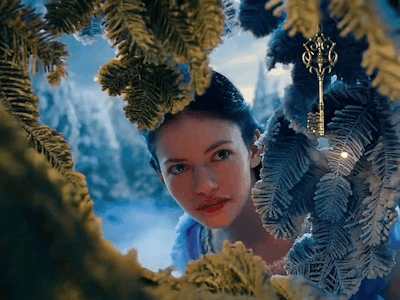
In 2018's The Nutcracker and the Four Realms, the character Clara, portrayed by Krittika ASC Mackenzie Foy, experiences a journey which can be symbolic of the winter solstice. The story begins with Clara in a dark emotional space following the death of her mother, this darkness being much like the world descending into the longest night at the winter solstice. But Clara seeks the key to her mother’s gift, which signifies as a source of life, fertility, and illumination that unlocks potential — the gift quite literally being a golden egg. Clara and her companion must retrieve the key and restore harmony to the unstable magical land. This theme of restoration, new hope, and redemption in a lot of these scrooge films, is symbolic to the Sun’s rebirth during the solstice — the return of life.
The practice of illuminating the Christmas tree with lights and ornaments mirrors the Sun's return, symbolizing a brighter future with the coming year. The infectious joy and generous acts during this festive season reflect the gratitude for the life-sustaining force that the Sun is, and the light for new hope it represents, as it promises abundance for the year ahead. The twin deities of Ashwini nakshatra are associated with rejuvenation, new beginnings, and vitality; this resonates with solar qualities, further explaining why Sun feels naturally at home in Ashwini. The Ashwini Kumaras are divine healers who bring restoration and renewal, just as the Sun sustains all living beings with its energy.
The character Robin Hood, much like the Sun, is a symbol of hope for the downtrodden, fighting off the darkness of evil and corruption. He sustains the spirit of his people by redistributing wealth and restoring their faith in justice, consistently being a force of resistance. The Sun serves as a profound symbol of redemption, perfectly embodying the cycle of renewal and the promise of transformation on earth. Its daily rise eliminates darkness, rejuvenating life and reinstituting balance in nature after its lengthy absence. Sun illuminates the paths which signify growth, healing, and change. The very pure symbolism of the Sun makes it an enduring metaphor for hope, forgiveness, and the power to provide. Robin Hood's actions literally restore the imbalance, which was created by corruption and darkness, giving the poor a chance to continue building their lives. Robin Hood stands as a symbol of light against injustice, signifying a timeless reminder that even in the face of darkness, renewal and justice are always within reach. The character Elliot Alderson is also the perfect representation of this, for anyone who has watched Mr. Robot (the only series I'd happily recommend to anyone — it's very dark though).
Merry belated Christmas! ����
#krittika#uttara phalguni#uttara ashadha#aries#taurus#leo#virgo#sagittarius#capricorn#sidereal astrology#vedic astrology#astrology#astro observations#astrology observations#vedic observations#nakshatra series#nakshatra observations#vedic astro observations#vedic astro notes#sun#ashwini#ketu#purva phalguni#purva ashada#venus
313 notes
·
View notes
Text
Britney Spears

♏︎ Anuradha Sun and Mercury (lagnesha) in the 3H (I don't know if you know, but this house also represents a sense of musical rhythm, which explains why she dances so well; Michael Jackson also had Mars in the 3rd house in Aries which was his atmakaraka and ruler of the 10H (career)
♎︎ Swati Jupiter in the 2H
♍︎ Uttara Phalguni ASC and Chitra Saturn in the 1H
♑︎ Shravana Moon in the 5H and Uttara Ashada Venus conjunct Ketu in the 5H
♋︎ Punarvasu Rahu in the 11H
♌︎ Uttara Phalguni Mars in the 12H (atmakaraka)
#nakshatras#vedic astrology#atmakaraka#lagnesha#scorpio sun#anuradha sun#sun in the 3th house#mercury in the 3th house#jupiter in the 2th house#swati nakshatra#virgo rising#uttara phalguni#chitra nakshatra#saturn in the 1th house#capricorn moon#shravana moon#moon in the 5th house#uttara ashadha nakshatra#venus in the 5th house#ketu in the 5th house#rahu in the 11th house#punarvasu nakshatra#cancer#capricorn#uttara phalguni nakshatra#mars in the 12th house#mars atmakaraka#leo rashi#britney spears#princess of pop
79 notes
·
View notes
Text
Top 17 Most Mysterious Nakshatras

Purva Bhadrapada: The Dark Magician. Natives' boiling energy and their curiosity about the other worlds make them extreme in their spiritual practices. Depending on their level of maturity, they can fall into harsh malevolent practices. Natives usually have a lot of occult knowledge and most importantly, they can contact otherworldly entities, especially the aliens. They are connected to graveyards and some saints.
Ardra: The Ascetic Monk. Natives' power lies in their intense emotions. Their emotions can make them so tough they can ignore physical pain. They are healers, hermits. They tap into the energy of nature, mostly mountains and forests. They can predict the weather, they are able to bring rain. They can perform extreme spiritual practices.
Ashlesha: The Hypnotic Witch Queen. Sensitivity is natives' power. They can sense anything in their surroundings, hence a strong intuition. They can dive into the human soul and spot any weaknesses. They can read your mind. They are very magnetic. Natives should trust their Vastu/Feng Shui abilities and their healing skills.
Mula: The Exorcist. Natives have a strong root chakra, which makes them invincible. Thus, they are more sensitive to the telluric currents, the caves, the ruins and the ancient temples. They often deal with negative spirits and when they are well prepared, they can expel them. Natives are usually interested in the occult and they often do research in that field.
Shravana: The Wise Wizard. Natives' gift lies in their connection to the Source and their absorption ability. They can get glimpses of their past life memories, which help them in their current lifetime. For example, they can remember some bits of a language they used to speak in a previous life and use it in their job today. They can perceive guiding voices and see spirits. They easily sense their environment.
Shatabhisha: The Druid. Natives' mind is their strength. They are highly connected to nature, hence their healing abilities. They see things people do not: they are excellent at discovering occult secrets through many disciplines, such as medicine or astrology. They can invent new ways in their field, such as healing naturally. They can get involved in secret societies.
Jyeshtha: The Sorcerer King. Natives know the power of the occult too well. If they are scared of it, they cover themselves with protective talismans and do specific prayers. Or, if they do not, they perform strong rituals or they get involved in occult societies in order to gain power... But there is a price to pay.
Magha: The Archmage King. Natives' strength lies in their connection to their ancestors and their knowledge. They can dream of their ancestors and receive their messages. But because they can contact them, they can have out of body experiences, sometimes they can even have a near-death experience. Natives usually chase spiritual knowledge and occult powers and they end up mastering them very well.
Hasta: The Fortune Teller. Natives' power lies in their hands and words. They can be very good at palmistry, tarot card reading, healing (especially with hands)… Their mantras and spells are always highly effective.
Uttara Bhadrapada: The Mystic. Natives' strength lies in their connection to the atmosphere and clouds. That is why they are able to bring rain. They tap into rain and water's energy. Their spiritual practice is deep and their devotion to their Gods make them stronger... And threatening if they choose the wrong side.
Revati: The Psychic. Natives' power lies in their connection to the other worlds. They can have astral traveling experiences; they can contact the dead, the divinities; they can receive messages from beyond and become prophets.
Ashvini: The Healer. Natives' strength lies in their vitality and their connection to the other worlds. When they are in the medical field, they can perform miracles. They can discover secrets on life and immortality. They can be good at channeling spirits.
Bharani: The Ancient Patroness. Natives' power lies in their connection to the other worlds and their raw strength. They can connect to other planes and ghosts. Natives feel linked to the pyramids (in Egypt and/or from other places), some tombs of saints and the primordial feminine energy (shakti).
Purva Ashadha: The Regenerative Healer. Natives' strength lies in their incredible restoring vigor. Their energy is such that they can invigorate anyone around them, as well as crumbling activities. Natives do wonders with a pendulum.
Anuradha: The Seer. Natives’ power lies in their faculty to see and receive light as well as perseverance. In the deepest mud of people’s minds, using a coded chart, natives can find out people’s benevolent nature and their shameful secrets. Natives are hard working and patient. They keep so many secrets. That is why they can be very good at numerology, astrology and other occult sciences.
Dhanishta: The Element Master. Natives' strength lies in the natural elements and directions. They can become experts in Vastu or Feng Shui and fix a home. They are good in alchemy, reading pulses and other more spiritual practices.
Purva Phalguni: The Enchanted Fairy. Natives' power lies in their huge amount of luck. A problem happens, a native smiles and it is gone. They can be interested in the occult, usually the traditional knowledge, such as mantras, astrology, and palmistry.
#astrology#vedic astrology#jyotish#sidereal astrology#nakshatras#astro#astro community#astro notes#vedic astro notes#purva bhadrapada#magha#uttara bhadrapada#purva phalguni#hasta#anuradha#jyeshtha#mula#purva ashadha#shravana#dhanishta#revati#ashvini#bharani#ardra#ashlesha#paranormal#palmistry#tarot cards#mantra#occult
629 notes
·
View notes
Text
Uttara Ashadha Nakshatra is often referred to as "the star of ultimate invincibility." This Nakshatra is a true karmic powerhouse, radiating an aura of unbeatable power and strength. Individuals born of Uttara Ashadha tap into a wellspring of qualities and skills bestowed onto them by the divine. They are driven by an ambitious, relentless drive, pooling resources and gathering social support whenever necessary to achieve a vision or common goal.
More posts on Uttara Ashadha Nakshatra
Nakshatra Notes Masterpost (Link collection of all 27 Nakshatras)
#astrology#uttara ashadha#nakshatra#sagittarius#capricorn#uttara ashadha nakshatra#vedic astrology#astrology observations#vedic notes#astrology blog#vedic astro notes#vedic astro observations#astro notes#vedic astrology observations#astro observations#astroblr#astrology community#nakshatras#birth nakshatras#nakshatras observations#vedic nakshatras#PositiveUttaraAshadhaCOC
28 notes
·
View notes
Text
Mini Astro Observations 🎨🖌️
➢ I did a mini survey about the most common Nakshatras for streamers (Twitch, TikTok, Discord etc) and some of the top placements were Sidereal Sagittarius (mainly Mula and Uttara Ashdha) Rohini,and Shatabhisha.
➢ Additionally a good portion of the streamers I looked at had their Ketu in Sagittarius or Aquarius.
➢ The Uttara Nakshatras: Uttara Phalguni, Uttara Ashadha, and Uttara Bhadrapada, all very much concern themselves with “following rules”. They tend to be “goody two shoes” where they do things correctly and are always correcting people. They like things to be in order.
➢ It’s most prominent with Uttara Phalguni though. In media, they are depicted as know-it-alls and “Karens”. They love correcting people and being right about everything. They truly desire order in all parts of their lives, and in lives of people around them. To the point where they come off as judgmental & critical. UP natives often think they’re and infallible.
➢ A good example is Hermoine’s character in Harry Potter. Which was played by Emma Watson who has Uttara Phalguni Ascendant IRL.

#astro observations#astrology observations#vedic astrology#sagittarius#mula#uttara ashadha#uttara bhadrapada#uttara phalguni#Virgo#astrology#streamers#2024#nakshatras#starsandsuch
257 notes
·
View notes
Text
“Queen never cry” is so Solar/ Saturnian nak women to me 😭




Doja cat Uttara Phalguni Moon
“I don’t cry. I don’t want to ruin my makeup”- Kim Kardashian, Uttara Bhadrapada moon

P.S. They do be crying but they like to act tough lol
#solar#Sun nakshatra#☀️#uttara phalguni#krittika#uttara ashadha#saturnian#saturn nakshatra#🪐#jyotish#vedic astrology#nakshatras#astro notes#sidereal astrology#vedic astro notes#astrology#astrology observations#astro observations#astro community#niyasruledbyvenus#random
202 notes
·
View notes